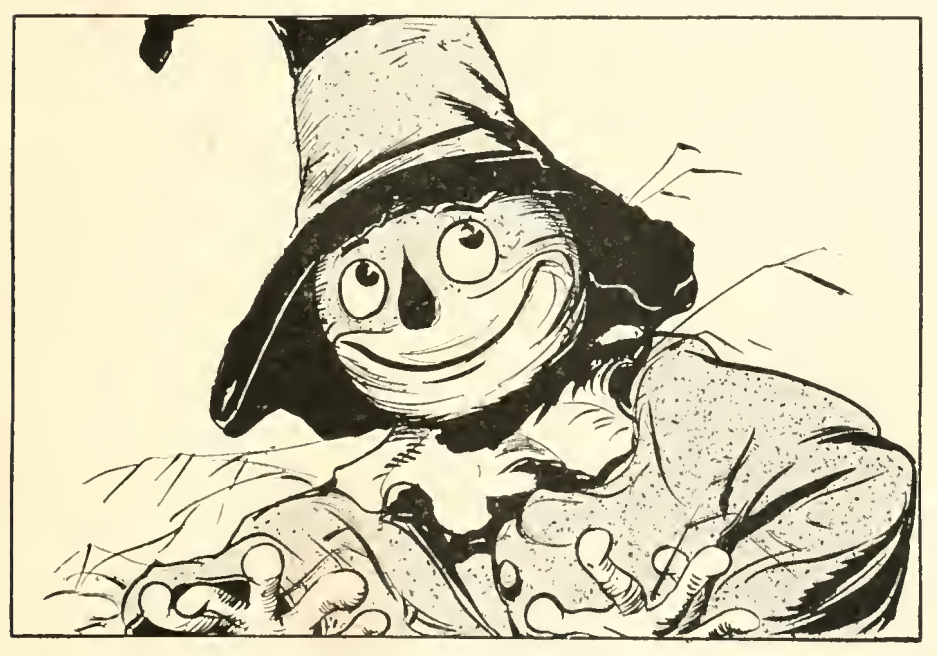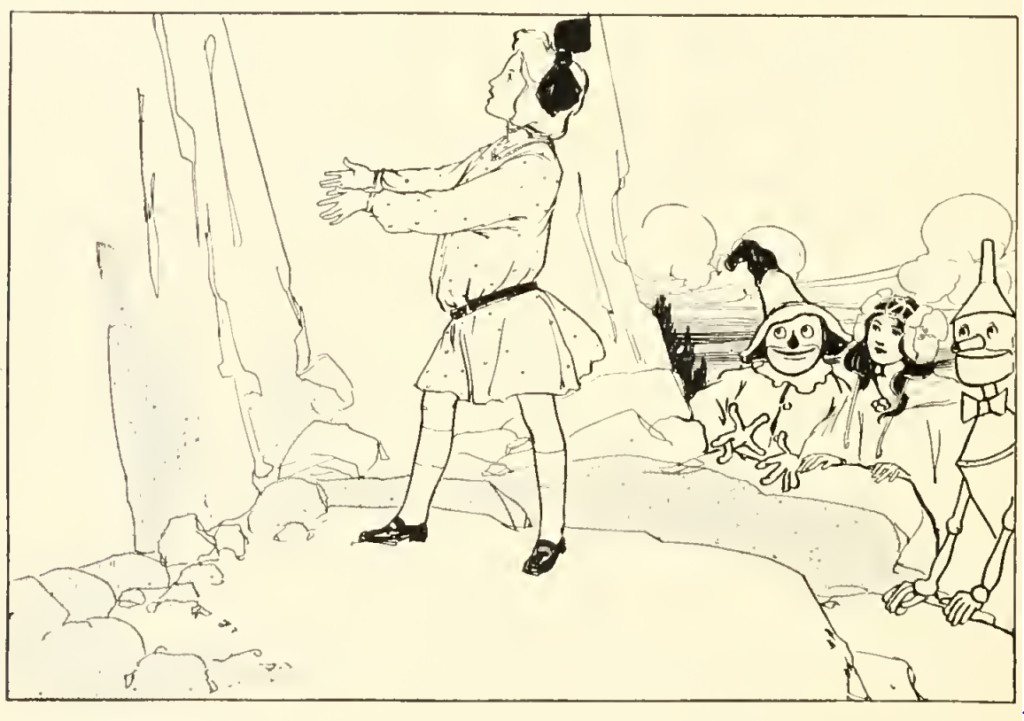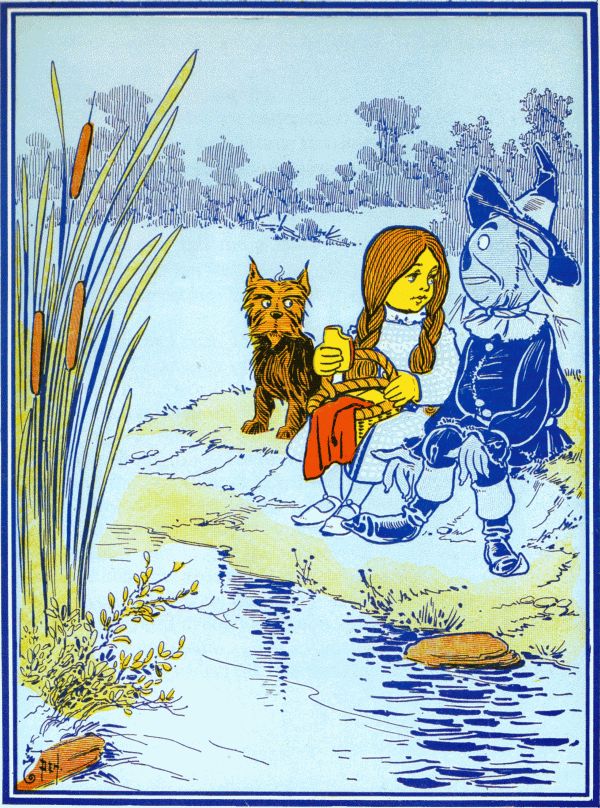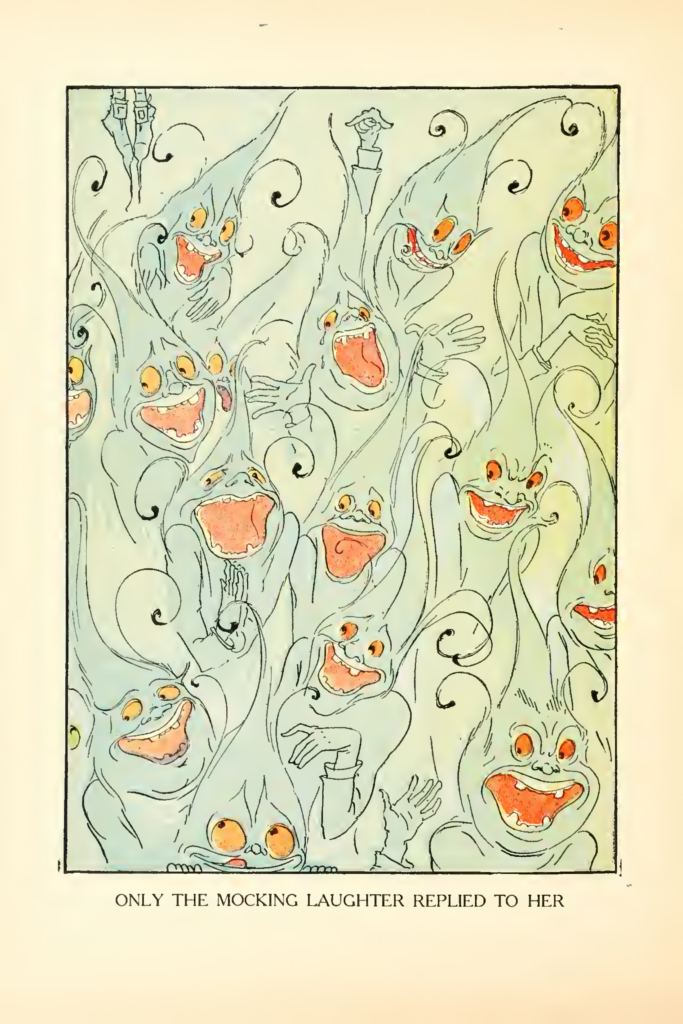For better or for worse, Neill’s artwork has lost much of the creepiness suffusing The Marvelous Land. Though the Wheelers are still pretty damn creepy. The Scarecrow now appears genuinely cute, and the relatively realistic Art Nouveau character designs feel less stiff and more approachable.


The only misstep, which would color the rest of the Oz series, is that Neill’s interpretation of Dorothy radically departs from Denslow’s. Denslow draws Dorothy as a little, almost toddler-like girl, with two brown pigtails and a modest calico dress. This original Dorothy exudes the innocence of childhood and a sweet simplicity.

Neill’s Dorothy looks several years older, and given the time between the books’ publications might well be. This Dorothy is an almost ridiculously beautiful girl with short blonde hair, seemingly wearing full makeup in addition to her pearl necklace.

The character design is quite a departure, and not for the better. As a protagonist, Dorothy is more appealing as a relatable anchor to the real world no matter how strange her environs. Instead of a normal kid, the heroine has herself become an idealized fantasy. A much more modest kid would also be an interesting contrast to Ozma, who is supposed to be an idealized fairyland princess. Also odd is that Neill has decided Ozma is brunette, when she was blonde in The Marvelous Land. If, for aesthetic reasons, he wanted one girl to be brunette and one girl to be blonde, why did he not just keep Dorothy brunette and Ozma blonde?
Rarely, the illustrations fall short of the visuals Baum’s writing suggests. In particular, Neill does not realize the jeering Nomes as interestingly as Baum describes them: “Whatever the creations [the Nomes] might be they seemed very like the rock itself, for they were the color of rocks and their shapes were as rough and rugged as if they had been broken away from the side of the mountain. They kept close to the steep cliff facing our friends, and glided up and down, and this way and that, with a lack of regularity that was quite confusing” (157). The writing suggests a gloomy cliff face squirming, as though alive, with a swarm of jagged stone-like beings. But Neill draws the Nomes as rather banal, furry elves, curved and round rather than jagged like rock.
